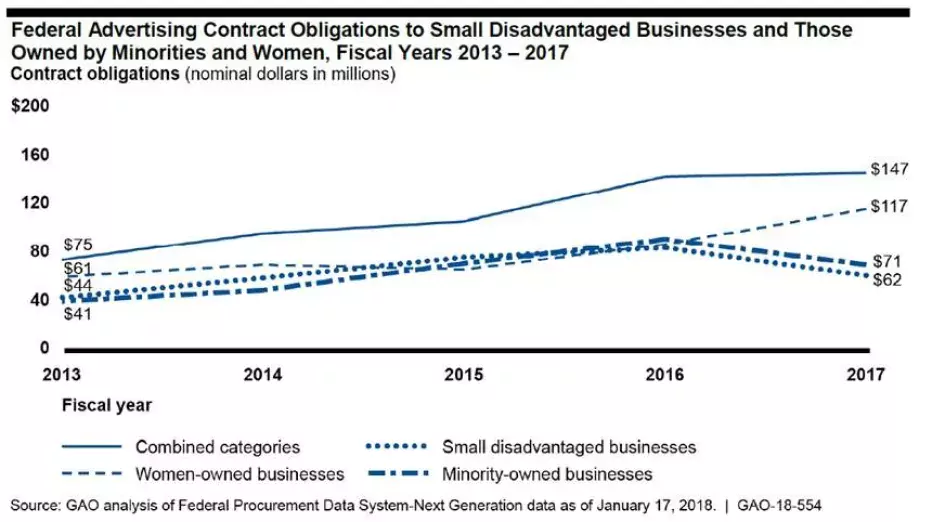For Women’s History Month, Women in the Workforce and Economy
Women have made significant strides in the fight for representation and equal treatment in the workplace. Most recently—and 100 years after the 19th Amendment gave women voting rights—Kamala Harris became the first woman to serve in the role of Vice President, breaking through a long-standing barrier in national leadership.
In recognition of Women’s History Month, we celebrate the achievement of women, while also recognizing that much work remains to address disparities in representation and equal treatment in the workplace.
In today’s WatchBlog post, we look at our reports that examine federal efforts to support women and to address some of the barriers that women face.
Federal Efforts to Support Women-Owned Businesses
Over the years, the federal government has implemented several initiatives to support women-owned businesses.
For example, as one of the country’s biggest advertisers, the federal government spends nearly $1 billion on advertising contracts. It also seeks to award these contracts to certain types of businesses—including minority and/or women-owned businesses. In 2018, we found that the share of these contracts awarded to such businesses has generally increased over the years, averaging about 13% from 2013-2017. Most of the contracts were awarded from the Departments of Defense, Health and Human Services, and Homeland Security. The below chart shows how federal advertising contract obligations increased between 2013-2017 for women and other types of small businesses.
Image

But in some cases, federal agencies could do more to ensure that programs intended to support women’s achievement perform as intended.
For example, in 2019, we recommended that the Small Business Administration (SBA) address persistent problems we found in its Women-Owned Small Business program. The program aims to give women-owned small businesses an edge when competing for federal contracts in industries where women have been traditionally underrepresented. But SBA reviewed a sample of businesses awarded contracts under this program and found that about 40% of the businesses were not eligible to participate in fiscal year 2017. Eligibility was determined based on certification that businesses were owned by one or more women. Moreover, SBA doesn’t use the results of such reviews to improve its oversight.
Sexual Harassment and Assault
Our work pertaining to sexual harassment and assault covers all victims, but it is important to acknowledge it as a persistent challenge for women in the workplace.
This includes work at DOD—preventing sexual harassment and assault is one of our priority recommendations there—as well as recent reports on the Department of Veterans Affairs and the U.S. Center for SafeSport. Additionally, female students in engineering and medical majors experience sexual harassment significantly more than female students in non-STEM fields.
Image

In 2020, we convened a group of experts who told us that there are no reliable nationwide estimates of the prevalence of sexual assault or of the cost of its consequences (such as legal fees and lost productivity). To address this, we made recommendations to the Equal Employment Opportunity Commission to help it better analyze data it collects on sexual harassment claims.
If you’d like to learn more about our reports on women’s issues, check out our key issues page on Women and Gender in Public Policy.





